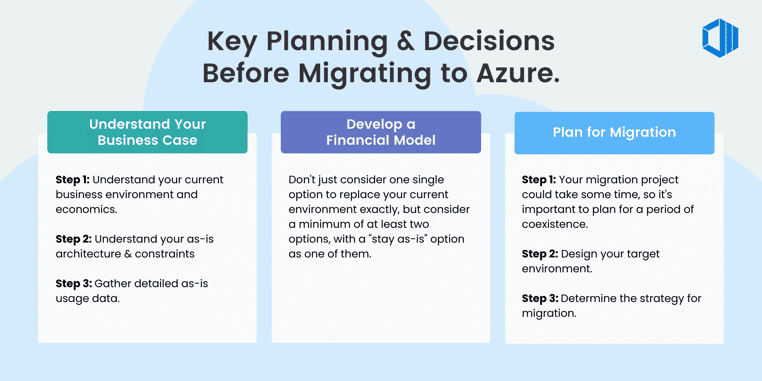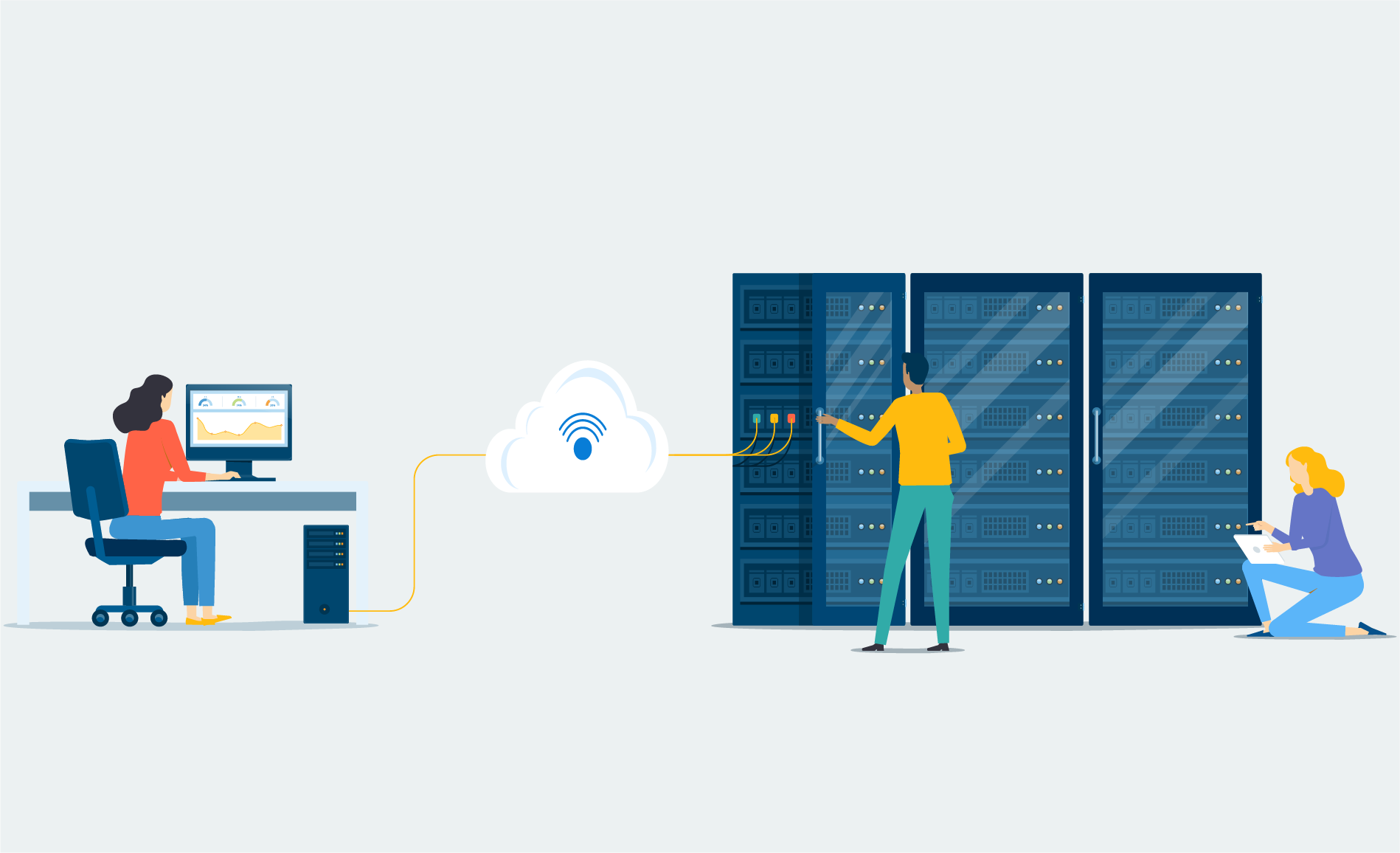With the rising interest in cloud computing and industry giants like Microsoft expanding their data centers to cater to new regions, the time is ripe for organizations planning a data center refresh to consider Azure migration. Transferring your data center to Azure offers a cost-effective alternative but requires a well-crafted Azure migration strategy.
So, where should your Azure migration journey begin? And what considerations and plans are crucial before you start migrating your workloads to Azure? This guide will highlight key planning points and decisions that you should take into account as part of your Azure migration project plan.
In this blog, you will find:
1. 🎯 Understand Your Business Case for Azure Migration
2. 💰 Develop a Detailed Financial Model for Various Options
3. 📝 Craft your Azure Migration Plan
1. Understand Your Business Case for Azure Migration
When determining if a move to Azure is the right one for your organization, it is important to start off by examining your business case for doing so.
❓ What are the drivers for this move? For example, are you looking to decrease operational expenditures? Reduce your capital expenditures?
Make an improvement in your overall security and compliance. These are important things to know before you commit to migrating to Azure.
Below, we’ve outlined three steps and included some key aspects to consider:
Step 1: Understand Your Current Business Environment and Economics
Consider your strategic objectives:
❓ What's driving your Azure cloud migration?
❓Have you set a budgeting cycle?
❓Who maintains your company's current infrastructure?
❓ Do you have a long-term vision of shifting your premises servers and infrastructure to Azure fully?
Step 2: Understand your As-Is Architecture & Constraints
Before beginning a migration to Azure, it’s important to know about the business outcomes of your current on-premise solution.
❓ Can you explain the design decisions you took when you put the on-premise solution in?
❓ Have you explored your technical constraints?
Step 3: Gather Detailed As-Is Usage Data
Before migrating to Azure, it’s important to map your on-premise data center usage. You need to know how much actual usage your current environment is getting and what level of demand your current system has, so you’ll be able to determine the size of the Azure virtual machine you’ll need.

2. Develop a Detailed Financial Model for Various Options
Once you’ve completed the three steps listed above, you need to turn your attention to developing a financial model for your Azure migration. But, when you’re considering this, it’s recommended that you don’t just consider one single option to replace your current environment exactly but consider a minimum of at least two options, with a “stay as-is” option as one of them. Considering multiple Azure target options means you can determine which of your options has the best financial business case over time.
When mapping out these financial models, consider the type of infrastructure you want to include, the licensing you’ll need for that, whether or not you require your environment to be scalable, and what current contracts you may have in place.
3. Craft Your Azure Migration Plan
After you’ve determined which of the models you want to go with, it’s time to plan for your migration to Azure; depending on the size of your environment, your migration project could take some time, so it’s important to plan for a period of coexistence – where some of your services will be running in your new Azure environment, and others will reside in your on-premises environment. Keep in mind your on-premises bandwidth requirements, the deployment sequence you’re going to use, and how you’re going to switch everything over.
Next, you’ll need to design your target environment. When designing, consider the following questions:
- ❓ Will you have naming conventions?
- ❓What design do you want your environment to have?
- ❓ What kind of subscriptions do you want (consider the size of your environment, access you need, and any licensing constraints that you might have)?
- ❓ How many users do you have (this last question is important because Azure has limitations on storage accounts within the subscription)?
Lastly, determine the strategy for your migration. According to Microsoft, there are three potential strategies you could take:
-
Lift and Shift:
With the Lift and Shift approach, you can copy your data from your old source and “lift” it into your Azure storage account, then “shift” your environment over to Azure.
-
Azure Site Recovery:
Through Azure Site Recovery, you can choose to replicate your workload from the source environment to your Azure subscription. The benefit of choosing this option is that you will experience very minor (or no) downtime during the replication.
-
Rebuild or Build Out:
This strategy allows you to redeploy your workload in Azure by rebuilding it piece by piece. While a little slower than the other approaches, taking the rebuild approach has the major benefit of getting rid of any legacy applications that you don’t want in your new Azure environment.
Of course, these strategies aren’t mutually exclusive to one another. It could be that a combination of these three approaches might be best for your unique situation.
Are You Ready to Migrate to Azure?
By migrating to Azure, you can reduce your capital expenditures, decrease your operational expenditures, improve your organization’s elasticity and scalability, and help improve security and compliance within your organization.
Thinking of migrating to Azure? Are you ready to leverage the power of the cloud but unsure where to start?
ProServeIT is here to simplify your cloud journey. We believe the first step for an efficient migration is to conduct an in-depth assessment of your current environment. This lays the groundwork for a seamless transition, helping identify potential challenges and opportunities.
If the idea of unlocking cost savings, improving scalability, and enhancing security through Azure migration aligns with your strategic vision, you're in the right place.
[Start Your Azure Migration Journey: Book an Assessment with ProServeIT]





